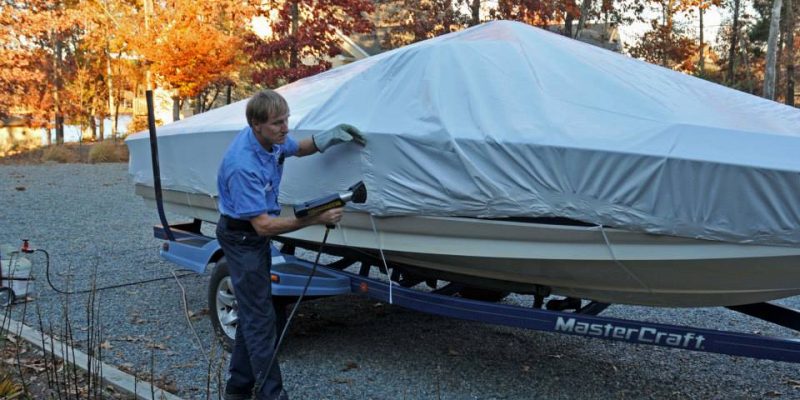Here’s a list of supplies you may need to properly and fully winterize a boat prior to the final step of shrink wrapping. PSA – all items can be purchased on Amazon or from your local marine store.
- Antifreeze
- Fuel Filters
- Fuel Treatment and Fogging
- Oil Filters
- Engine Lubricant
- Oil Change Pumps
- Dehumidifier
- Watercraft Cleaning Products
Believe it or not, states like Texas, Louisiana, Georgia, and California actually experience the most freezeing claims. If you’re a boater in the Northeast or Midwest, sure you probably need no convincing to winterize. However, it turns out that areas with less intense winters should absolutely prepare for freeze damage. It’s always better to prepare for the worst and not roll-the-dice on an expensive investment like watercraft.
Before starting the process, take note of a few things. First, take inventory of the boat’s fenders, dock lines, cushions, covers, and all other equipment. Next, review the boat’s condition and examine electrical and mechanical systems.
Now it’s time to winterize your boat.
ENGINE
- Begin by fogging the engine. Fogging oil prevents corrosion when it is stored for an extended period of time.
- Change the engine oil and filters. Keeping the old oil in the crankcase during winter storage can cause corroded engine components. Change the engine coolant as well.
- Use antifreeze to fill the engine block. This will help avoid any issues with residual water freezing and ultimately cracking the block. Do not rely solely on antifreeze to maintain your engine during the off-season. Some engines have heat exchangers that are not entirely protected by anti-freeze. As an additional precaution, drain your engine and check for any requirements that may apply to your specific make and model.
OTHER TIPS
- Drain the freshwater tank and protect it with antifreeze.
- There could be residual water in the boat’s sanitation system. Any water left during storage months could freeze and cause significant damage. Fill the raw water strainer, intake hose, and holding tank with antifreeze.
- Prevent mold and mildew buildup by keeping the vessel ventilated with passive shrink wrap ventilators.
- Pressure test the cooling system.
- Disconnect cables and clean all battery terminals.
- Inspect and clean refrigeration.
- Inspect and clean air conditioning.
- Clean salt water wash-down pump.
- Inspect and clean shower sump and filter.
- Examine discharge pump and filter.
- Remove exterior cushions and canvas.
Once you have gone through all the steps of winterizing the systems and equipment, it’s time to shrink wrap the vessel. This is the best method to prevent snow, ice, and water from building up in the hull. Shrink wrap will provide a protective barrier against weather damage and unwanted rodents, insects, dust and more. This type of protection requires little to no maintenance throughout the off-season. There are a variety of colors, sizes, and widths available to ensure your boat receives the proper safeguard. You should consult a professional for installation because improper shrink wrapping can result in mold and mildew – a headache you don’t want.




